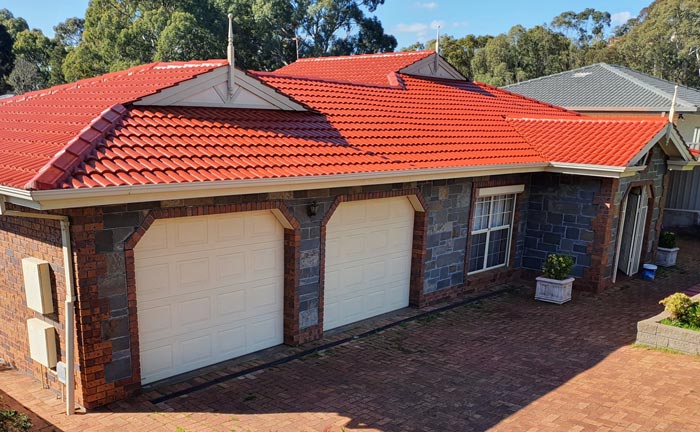A well-maintained roof is integral to the overall condition and longevity of any home or building. To make the most of your investment, it’s crucial to know how to extend the lifespan of your roof through proper maintenance and care. Taking care of your roof not only saves you money on costly repairs, but it also ensures that your home stays protected in all types of weather.
Understanding the specifics of your roof and being aware of the necessary maintenance tasks can make a significant difference in the lifespan and condition of your roofing materials. By following certain tips and tricks, homeowners can prevent and identify damage before it becomes an expensive repair. Furthermore, seasonal and professional roof maintenance can help shed light on how to further prolong your roof’s durability.
Key Takeaways
- Proper maintenance and understanding of roof specifics can extend its lifespan
- Preventing and identifying damage early on saves money and keeps your home secure
- Seasonal and professional roof care contributes to the overall durability of your roof
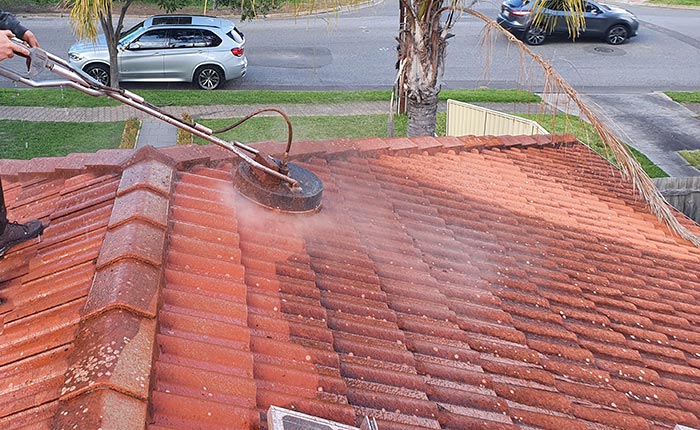
Identifying Your Roof Type
When it comes to extending the lifespan of your roof, understanding the type of roof you have is crucial. Each roof type requires different maintenance strategies and has unique benefits and challenges. This section will help you identify the most common roof types.
Flat Roofs are quite popular in commercial and industrial settings. They are generally constructed using materials such as Iron or Colourbond steel. These roofs require regular maintenance mainly just ensuring that no dirt or silt builds up in areas which may remain damp for prolonged periods and start rust and corrosion on the roofs surface.
Gabled Roofs are characterised by their triangular shape, with two sloping sides coming together at a ridge. This type of roof is known for its excellent drainage and versatility, as it can accommodate a range of different roofing materials, including tiles and colourbond. These roofs are the most simple design house roof and have the least number of problems.
Hip Roofs have slopes on all four sides and meet at a single ridge running along the top. This roof design is the most common form of a typical Australian house. It will also have valley gutters on the internal returns of the roof.
By identifying your roof type, you can implement the appropriate maintenance tips and tricks to ensure a long-lasting and problem-free roof. Remember that regular inspections and preventive measures are key factors in extending your roof’s lifespan.
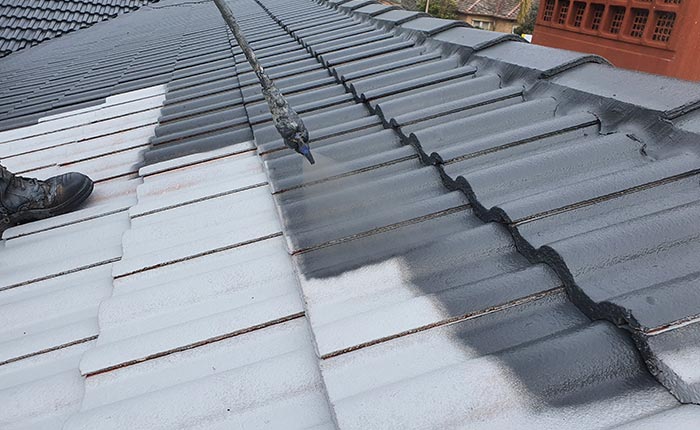
Routine Maintenance Responsibilities
Clearing Debris
Homeowners should be diligent about clearing debris such as leaves, branches, and rubbish from their roofs. Accumulated debris can cause water to pool, leading to rot, rust and leaks. Additionally, debris can provide a habitat for pests. To remove debris, a soft-bristled broom or leaf blower is ideal, as these tools are gentle on roofing materials. It is vital to be cautious while walking on the roof to avoid damaging shingles or tiles.
Regular Gutter Cleaning
One significant element of roof maintenance is regular gutter cleaning. Gutters are essential for directing water away from the roof and the house’s foundation. When gutters become clogged with debris, they cannot function correctly, which can cause water to back up and potentially damage the roof. Homeowners should aim to clean their gutters at least twice a year — once in the spring and once in the autumn. Gutter cleaning involves:
- Removing leaves, twigs, and other debris from the gutters
- Flushing gutters and downspouts with a garden hose
- Checking for any damage or signs of wear
Roof Inspection Schedule
Regular roof inspections are crucial for extending the lifespan of the roof. Experts recommend conducting inspections at least twice a year, usually in the spring and autumn. These inspections can help identify potential issues before they become severe, costly problems. The inspection should cover:
- Checking for missing, damaged, or loose tiles
- Inspecting flashings for any signs of wear or damage
- Evaluating the general condition of the roof
- Looking for any signs of leaks and water damage within the attic or on the internal ceilings
Hiring a professional roofer for periodic inspections can be a worthwhile investment, as they have the necessary expertise and equipment to ensure a thorough assessment, and can immediately address any problems detected.
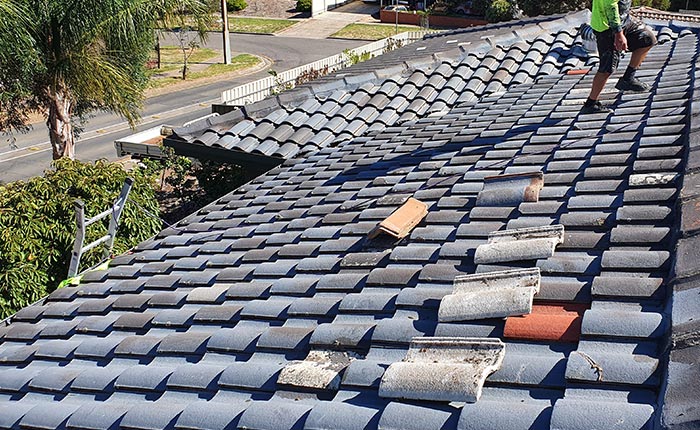
Preventing and Identifying Damage
Avoid Walking on the Roof
To prevent damage to your roof, avoid walking on it unnecessarily. Your weight can cause the shingles or tiles to crack, leading to potential leaks or further damages. Whenever possible, use a ladder or harness system to obtain a closer look at your roof. Only walk on the roof when absolutely necessary, and always wear shoes with soft, rubber soles for better grip and minimal damage.
Identifying Signs of Wear and Tear
Regular inspection of your roof is crucial in identifying signs of wear and tear. Some common signs include:
- Cracked or broken tiles: These could be small or significant cracks, potentially from people walking over the roof.
- Granule loss: If you notice a significant amount of granules in your gutters or downspouts, your concrete tiles are probably porous and loosing substance with each rain.
- Moss or algae growth: Usually indicates a porous tile that is remaining wet or soaked for long periods after rain events.
- Damaged or missing flashing: Flashing helps to protect your roof from leaks, so inspect for any signs of damage or missing pieces.
Inspect your roof at least once or twice a year, ideally during spring or autumn, to catch any potential issues early.
Addressing Damages Promptly
Upon identifying any signs of damage, it’s essential to address them promptly to prevent further problems. For minor damages, such as a few missing shingles or a small area of algae growth, you can perform the repairs yourself. However, for more significant damages or if you’re unsure about the extent of the problem, consult a professional roofing contractor to assess the situation and recommend the appropriate actions.
By following these tips and tricks, you can ensure the longevity of your roof, preventing costly repairs or replacements down the line.
Professional Roof Maintenance
When to Hire Professionals
While regular DIY maintenance is essential, hiring professionals for periodic inspections and maintenance ensures the longevity of your roof. It is recommended to have a professional check your roof at least twice a year, preferably during spring and autumn, as these are the ideal times to spot and fix any issues before they escalate into bigger problems.
Moreover, you should consider calling in experts under the following circumstances:
- After a severe storm or natural disaster
- If you suspect any leaks or water damage
- When you are planning major roof-related renovations
- If you encounter extensive mould, algae, or moss growth
Finding Trusted Professionals
When looking for reliable roof maintenance service providers, consider the following aspects:
- Experience: Opt for professionals with a proven track record in the industry. Check their experience level in handling different types of roofs and materials.
- Certifications: Ensure the company holds relevant certifications and licences, which indicate that they adhere to industry standards and comply with safety regulations.
- References: Ask for recommendations from friends, family members, or neighbours who have had roofing work done. Additionally, read online reviews to gauge customer satisfaction.
- Insurance: Verify that the company has proper insurance coverage to protect you from any liabilities in case of accidents or damage during the maintenance work.
- Warranty: Choose a roofing contractor who offers a warranty on their work, ensuring that if any issues arise, they will be addressed promptly.
- Quotations: Obtain quotes from multiple providers to compare and choose the best value for money while maintaining quality.
By following these guidelines, you can select a professional roofing maintenance service that will help prolong your roof’s lifespan and maintain its integrity well beyond the average expected lifespan.
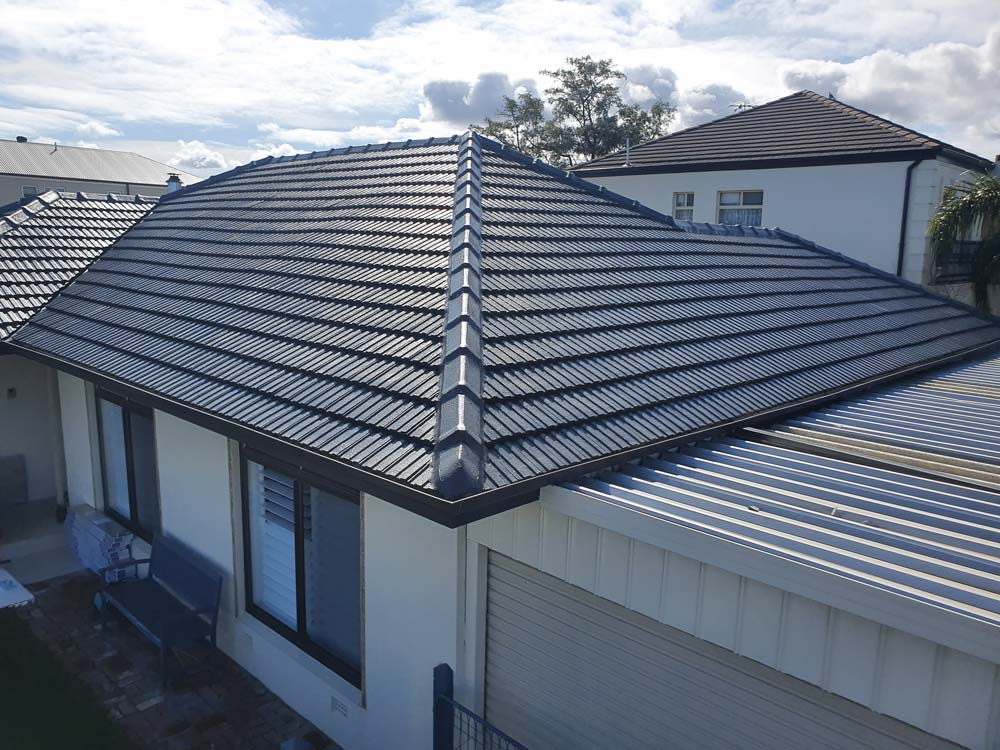
Understanding the Lifespan of Roofing Materials
When considering how to extend the lifespan of your roof, it is essential to understand the lifespan of different materials available for roofing. The two main types of materials discussed are Metal Roofs and Clay or Concrete Tiles.
Metal Roofs
Metal roofs are a popular choice for their durability, weather resistance, and energy efficiency. They can last anywhere from 40-70 years, depending on the type of metal used and the quality of the installation. There are various metals available for roofing, including:
- Aluminium: 35-50 years
- Steel: 30-50 years
- Copper, Zinc, or Stainless Steel: 70-100 years
Metal roofs require minimal maintenance, but routine inspections and addressing any issues as soon as they arise are key to ensuring a longer lifespan. Regular cleaning, proper sealing or painting, and quickly repairing any damage are essential steps in maintaining a metal roof.
Clay or Concrete Tiles
Clay or concrete tiles provide a classic, attractive look and boast a long lifespan while offering excellent fire resistance. With proper maintenance, these materials can last anywhere from 50-100 years. The longevity of a clay or concrete tile roof is dependent on its quality and the installation process, as well as the environmental conditions it faces.
Maintenance for clay or concrete tile roofs is slightly different from that of metal roofs. Although they are durable, they can still be susceptible to chipping, cracking, or breakage. To keep your roof in good condition, regular inspections are necessary, and damaged or broken tiles should be replaced promptly.
It is crucial to remove debris from your roof regularly and examine the flashing, underlayment, and ventilation system to ensure they are functioning effectively. Properly sealing and maintaining your tiles can also help prevent water infiltration and extend the lifespan of your roof.
Seasonal Roof Care
Spring and Summer Maintenance
During the spring and summer months, it is essential to inspect your roof for any damage caused by winter storms. Look for loose, curling, or up nailed metal sheets and replace/fix them as needed. Clear any debris such as leaves, branches, and dirt that may have accumulated during the winter months. This will allow water to flow freely off the roof, preventing any potential damage.
It is also a good idea to check for damaged or rusted flashing around vents, chimneys, and skylights. Replace or repair them as necessary. Additionally, ensure that gutters and downpipes are clear of debris and in good working condition. Properly functioning gutters will channel water away from your home, reducing the risk of water damage to your roof.
Invest in proper roof ventilation to help regulate temperature and humidity levels, preventing damage from heat and condensation.
Financial Aspects of Roof Maintenance
Routine roof maintenance is essential for ensuring the longevity of your roof and preventing potential problems. This section will cover the financial aspects of roof maintenance, including initial costs and long-term savings.
Maintenance Costs
The cost of roof maintenance varies depending on the size and type of your roof, as well as the specific tasks to be performed. Generally, professional roof maintenance services charge by the square metre, and prices can range from $20 to 40 per square metre. However, it’s important to get multiple quotes from reputable contractors in your area to receive an accurate estimate.
Major expenses in roof maintenance include:
- Inspections: A typical roof inspection in Australia is likely to cost around $300+GST. This should be a broad inspection of the roof and give the home owner a good indication as to the general condition of the roof.
- Roof Restoration: The typical cost of a full roof restoration in Australia is from $6000 – $9000+GST. You can expect this to include roof cleaning, repointing and roof coating.
- Gutter cleaning: Vital for preventing water damage, typically costing $300 – $1000+GST depending on the size and access.
- Replacing damaged materials: Costs can vary significantly depending on the extent of damage and type of materials used.
Long-Term Savings
Investing in routine roof maintenance can result in substantial long-term savings. Some of the benefits include:
- Extended roof lifespan: A well-maintained roof can last up to 25% longer than a neglected one, delaying the need for costly replacements.
- Reduced energy costs: Proper insulation and ventilation in your roof can help reduce heating and cooling expenses. Also, annual cleaning and repairs prevent leaks and drafts, leading to energy savings.
- Prevention of major issues: Small issues, if left unattended, can escalate into more significant and costly problems. Regular maintenance allows for early detection and repair.
- Increased property value: A well-maintained roof adds value to your property and can help attract potential buyers if you decide to sell.
Remember, it’s important to factor in the financial aspects of roof maintenance when considering your roof’s overall health. While the initial costs may seem high, the long-term benefits and savings make it a worthwhile investment.
Conclusion
Proper roof maintenance is crucial in prolonging its lifespan and ensuring its optimal performance. By following the tips and tricks mentioned, one can effectively extend the life of their roof, save on costly repairs, and maintain the overall appearance of their home. Performing regular inspections, cleaning, and addressing issues promptly will result in a well-maintained roof that can withstand the test of time.
It’s essential to stay aware of the potential problems that might arise, such as moss growth, water damage, or loose roofing materials. Taking immediate action when these issues are noticed can prevent severe damages and expensive repairs in the long run. Moreover, it’s always a good idea to seek professional advice and assistance when needed.
In conclusion, the key to maintaining a long-lasting roof is consistent care and diligence in addressing issues as they arise. By doing so, homeowners can ensure the longevity of their roofs, protect their homes and maintain their property value. Remember, a well-maintained roof is a reflection of a well-kept home.
Are you a local Adelaide resident? Protect your investment and extend the lifespan of your roof with our expert roof restoration services.
Contact us today to schedule a consultation and keep your roof in top condition for years to come.
